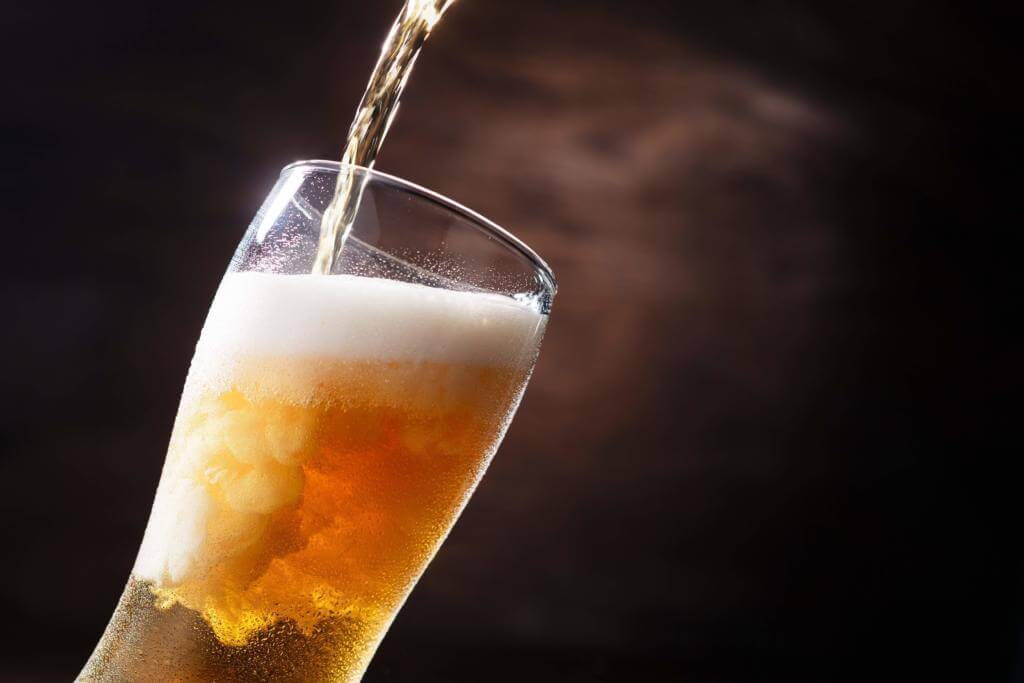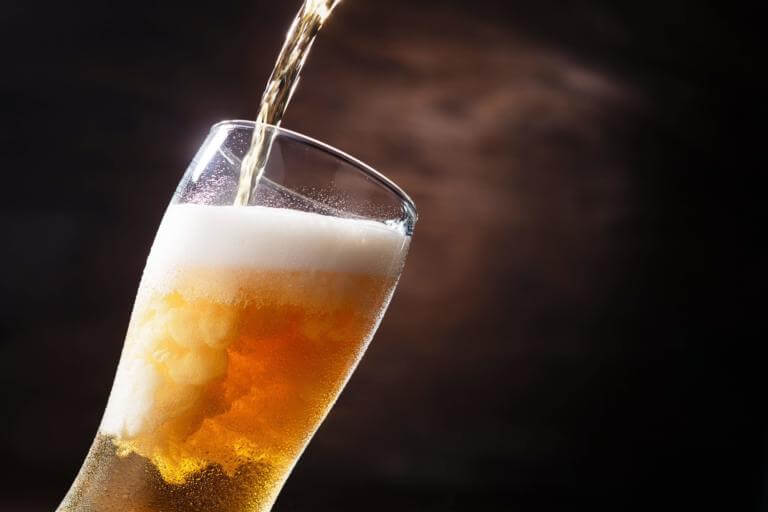 The beer head, or as the Bavarians call it, ‘die Blume’ (the flower), has long been a topic of fiery debate across all corners of the beer-loving world. So, before we start arguing about whether or not foam belongs on the top of an ice-cold pint of beer – let’s uncover what it is and why it’s different from glass to glass, beer to beer and person to person.
The beer head, or as the Bavarians call it, ‘die Blume’ (the flower), has long been a topic of fiery debate across all corners of the beer-loving world. So, before we start arguing about whether or not foam belongs on the top of an ice-cold pint of beer – let’s uncover what it is and why it’s different from glass to glass, beer to beer and person to person.
This is the science behind what some beer fanatics call… an art-foam.
Foam explained
Foam is produced from the bubbles of gas in our beer. This gas (carbon dioxide) is produced during the fermentation, bottling and kegging of beer, when the beer is pressurised and condensed into a space. That means when a beer is opened or poured into a glass, the gas bubbles rise to the top and create a foamy layer full of protein, yeast and hoppy residue. Scientists call it ‘nucleation’.
Nucleation as a whole is quite tough to grasp, but we’ll try to make it as simple as possible. In any beer, there are large protein groups and small protein groups, which both act as foam aggregators (create foam). Lipid Transfer Protein 1 (LTP1) are proteins commonly found in the grains used to brew the beer.
These LTP1 proteins hate water – so, to get out of a glass of amber liquid the only way is up or down the hatch! In order to catch a lift up to the surface, they latch on to the carbon dioxide bubbles and travel up to the surface with the bubbles. They then form a shield around the bubble in order to maintain foaminess. The hops also play a role here to solidify the foam to a light cloudy coating with the help of iso-alpha acids.
The amount of LTP1 found in a single batch can be influenced by the climate from which the grain was sourced. Both impact taste, foam quality, texture and retention of the beer foam.
More about foam and flavour
So why does beer taste different with a foam head?
This is mainly because foam provides three acute tasting experiences.
The first is the physical tasting perception, which we expect from the physical texture of the foam – the light, frothy foaminess has the ability to soften our palette.
The second and third are a combination of both taste and our scent. Foam carries many odour components from a liquid state to semi-solid state through oxidation. This leaves many traces of hops and sweetness, which help you taste the beer.
Once your full tasting senses are open, the combination of foam and liquid provides the ultimate beer-tasting combination.
Why do some beers have more or less foam?
The sky’s the limit in terms of answers to this question! The beer, the pouring technique or even the glassware can impact foam. There are seven main reasons for too much or too little foam:
- Technique:
When pouring a beer whether it be from a tap, pitcher or bottle, there are a few ways to pour a perfect beverage. If your glass is on an incline it will foam less, but the more upright or higher pouring distance you are away from the glass the more it will foam. To get the best of both, pour on an incline first and then adjust based on how foamy you would like your beer. - Glassware:
Clean glassware is a must no matter what, however, residue detergent and cleaning agents often remain on the inside of the glass. This often results in less foam – so try to give your glass a quick rinse beforehand. - Lip balms and lipsticks:
These can affect your foam’s stability, resulting in less foam. This is mainly because of the waxes or fats found in these products, which could affect the interaction between proteins and carbon dioxide. - Fatty foods:
When you eat fatty foods, grease can remain on your lips and therefore function the same way lipstick does in affecting the foaminess of your beer. - Alcohol percentage:
Alcohol actually dissipates foam. Therefore, the more alcohol (ethanol) content, the faster foam disappears. - Temperature:
Higher temperatures not only affect the taste but also the foam quality and content. A higher temperature means that smaller bubbles are absorbed by bigger ones, which can be observed in warmer climates. - Nitrogen:
Nitrogen is a relatively new concept in the beer industry. Nitrogen has the ability to produce a rich creamy taste in your beer, and can often be served with a thick pillowy layer of foam. Nitrogen brews have one of the most stable foams due to the high density of very small gas bubbles.
There are many more reasons, tricks and hacks as to why a beer has more or less foam, but what we now know is that beer foam is a lot more complicated than one would think! The same goes for many other aspects of the mythical amber beverage.
Next time you have a pint with your mates – whip out some fun facts about beer foam.
Cheers!

